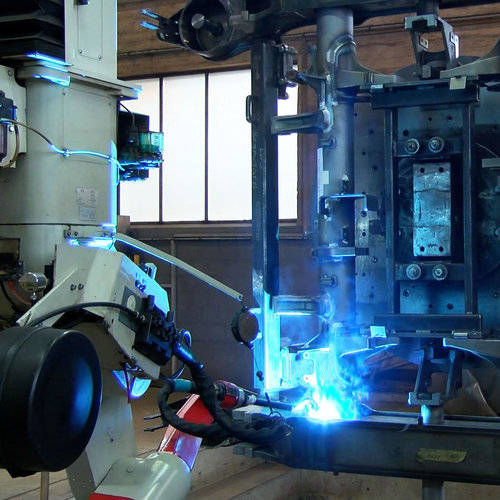Stick
TIG
MIG
FCAW
You’ll find multiple names employed for exactly the same process in welding since they have grown to be commonly accepted slang terms. It doesn’t matter everything you refer to it, if you understand these are the same. Let me explain.
Stick welding is a slang term for “Shielded Metal Arc Welding” and it is commonly abbreviated, or known, as “SMAW”. The slang term arises from the rod which is used which is looks like a stick. This is a procedure that utilizes a source of energy which causes constant amperage to make an arc. This kind of welder runs on the rod, or electrode, made of metal with a flux coating on the outside that protects the weld area from the air as the rod is burning. SMAW is usually used in the area because it’s a practical welding method that is affordable, is effective on many metals, and enables welding thick materials. Labeling will help you an excellent joining process for some industrial construction needs. SMAW is also a month . type of welding which is taught inside the most schools as foundation to learning other metal joining processes.
TIG welding, or TIG, is an abbreviation for “Tungsten Inert Gas” but its proper name is “Gas Tungsten Arc Welding” commonly abbreviated and referred to as “GTAW”. In older times, previously be also generally known as “HeliArc”. GTAW is a joining technology that utilizes a consistent current energy the same as Stick welding. What changes will be the way filler metal is deposited to the joint. TIG works on the torch which has a little bit of tungsten to generate an arc. The torch boasts shielding gas flowing through it to protect the weld area from air. Characteristics of tungsten allow arc temperatures to achieve greater than 10,000 degrees. The way in which TIG works would be that the arc is created and then a filler metal is combined with the joint. Filler metals for this process can be found in wire form and therefore are simply cut to length. Essentially the most popular shielding gas is Argon, which is used for welding greater than Ninety percent of metals. TIG welding is used for welding exotic metals or anywhere that requires high quality welds. This technique is one of the roughest kinds of welding to master.

MIG welding, or MIG, can be an abbreviation for “Metal Inert Gas” that is more formally referred to as “Gas Metal Arc Welding” or “GMAW”. The phrase MIG emanates from the first shielding gasses used which are the inert, or Nobel, gasses. Today the gases used vary, so the name has officially been changed to “Gas Metal Arc Welding”. MIG welding will be the slang term that is commonly accepted. It’s also called “Wire Wheel Welding”. This process runs on the wire feed to move solid filler wire for the weld joint. The wire feed is associated with a continuing voltage power supply that produces the arc to melt the wire if this hits the weld joint. Ahead of the wire creates an arc there needs to be a shielding gas feed with the system. MIG welding is completed via a MIG gun which combines the wire, electricity and shielding gasses all as well. The MIG gun carries a trigger that, once squeezed, starts the metal joining process. This process is recognized as semi-automatic as the filler metal is continuously feed towards the weld joint. This metal joining process is typically found in factories where high production is needed. MIG is not hard to work but setting up the equipment might be troublesome for the less experienced operator.
FCAW, or “Flux Cored Arc Welding”, is technically considered yet another kind of welding process. The fact is that FCAW can be a different form of electrode or filler wire used in a MIG welding machine. The electrode is a hollow tube which includes flux inside the center. What this does is permit the electrode to weld without resorting to an external shielding gas. There’s 2 types of electrodes utilized in FCAW; self shielding and dual shielding. Self is an electrode that does not need any shielding gas. It’s very comparable to a Stick welding electrode turned really well. What this will is allow welding in windy conditions. The down side of MIG welding is wind or drafts cause welding defects. A self shielding FCAW electrode solves this dilemma. Dual shielding electrodes need shielding gas to function properly. The advantages of this type of electrode may be the amount of weld it might deposit. FCAW is typically found in shipyards or anywhere that needs a lot of welding to be done on thick metals.
There are several more different varieties of welding which can be used. Examples include:
Oxy Acetylene
Lasers
Brazing
Soldering
Plasma
SAW or “Submerged Arc Welding”
Friction
Plastic
Electron Beam
Explosive
Thermite
Forge
Ultra Sonic
As well as the list continues! In the end one of the most widely used processes are Stick, TIG, MIG and FCAW. These are the processes which are currently popular as they are what industry needs. They produce welds ranging from mass production to x-ray quality.
More info about industrial manufacturing go to see our internet page.
